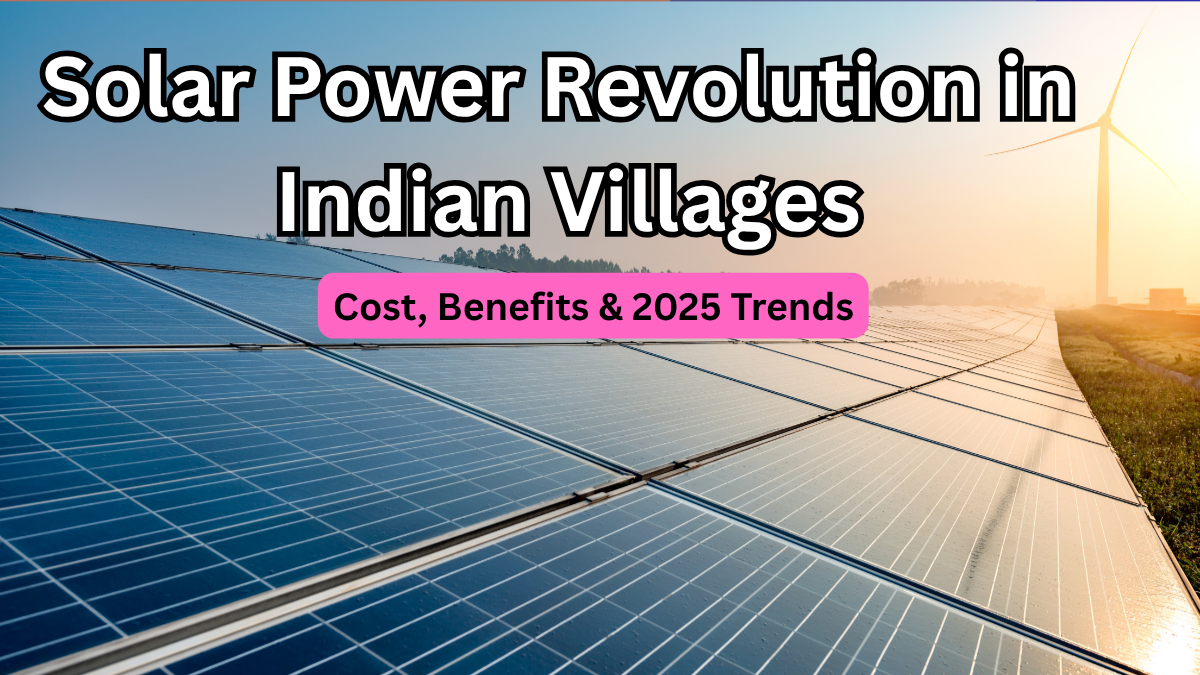Electricity is no longer a luxury—it’s a necessity. In 2025, India continues to make great strides toward lighting up its villages with advanced village electrification schemes aimed at improving quality of life and driving economic growth. The focus is on providing reliable rural power supply in India to ensure that even the remotest hamlets benefit from modern infrastructure.

Why Electrification in Villages Matters
For rural India, access to power means more than just lights. It impacts education, healthcare, businesses, and even agriculture. Here’s why village electrification is a game-changer:
-
Better Education: Students can study after dark with uninterrupted lighting.
-
Improved Healthcare: Clinics can store vaccines and run diagnostic equipment.
-
Economic Growth: Small businesses thrive when there’s steady electricity.
-
Modern Farming: Irrigation systems and agri-based industries get a boost.
Major Village Electrification Schemes in 2025
The government has introduced multiple programs to improve rural power supply in India. Here are some of the most impactful:
Deen Dayal Upadhyaya Gram Jyoti Yojana (DDUGJY)
-
Focus: Rural electrification for every household.
-
Features:
-
Strengthening rural electricity distribution networks.
-
Separation of agricultural and domestic electricity lines.
-
Providing free electricity connections to Below Poverty Line (BPL) families.
-
Pradhan Mantri Sahaj Bijli Har Ghar Yojana (Saubhagya)
-
Focus: Universal household electrification.
-
Features:
-
Free connections for poor households.
-
Use of solar power packs in remote areas.
-
Pre-paid and smart meters for efficient usage.
-
Revamped Distribution Sector Scheme (RDSS)
-
Focus: Enhancing the quality and reliability of electricity.
-
Features:
-
Financial assistance for power distribution companies.
-
Reducing transmission losses.
-
Introducing advanced technology for grid management.
-
Rural Rooftop Solar Initiative
-
Focus: Integrating renewable energy into village electrification schemes.
-
Features:
-
Installation of rooftop solar panels in villages.
-
Subsidies for households and community buildings.
-
Promoting clean and sustainable energy.
-
Electrification Progress in Numbers (2025)
| Scheme | Households Benefited | Key Focus |
|---|---|---|
| DDUGJY | 2.5 crore+ | Distribution & reliability |
| Saubhagya | 2.8 crore+ | Household electrification |
| RDSS | Ongoing nationwide | Loss reduction & grid tech |
| Rural Rooftop Solar Initiative | 50 lakh+ | Renewable energy adoption |
Challenges in Rural Power Supply
While progress is visible, a few challenges remain:
-
Remote Access Issues: Difficult terrains slow down infrastructure development.
-
Quality of Supply: Voltage fluctuations affect usage in villages.
-
Sustainability Concerns: Ensuring long-term maintenance of infrastructure.
The Road Ahead
By integrating solar energy, smart meters, and improved grid management, village electrification schemes are evolving rapidly. The vision for 2025 and beyond is clear—affordable, sustainable, and uninterrupted rural power supply in India.
FAQs
1. Which is the most successful village electrification scheme in India?
The Saubhagya Yojana has been one of the most impactful, connecting millions of households across rural India.
2. How is renewable energy being used in rural electrification?
The Rural Rooftop Solar Initiative promotes solar energy adoption in villages, ensuring a sustainable power supply.
3. Are these schemes free for all rural households?
BPL households receive free connections under schemes like DDUGJY and Saubhagya, while others may pay subsidized rates.
4. What’s the government’s goal for rural power supply by 2025?
The aim is 100% electrification with reliable, affordable, and sustainable energy for all villages in India.
Click here to learn more
